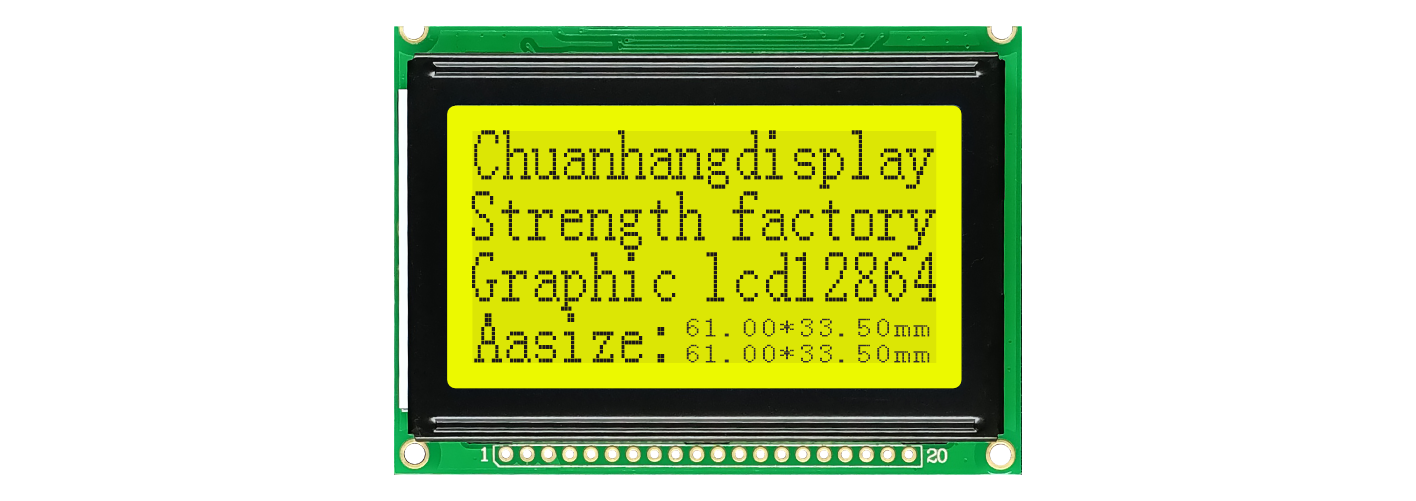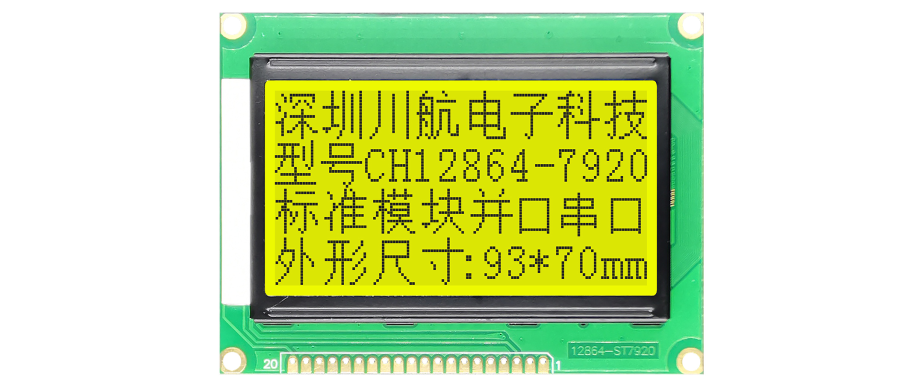In the world of electronics and product design, the display is often the heart of the user interface. Selecting the right OLED LCD module is a critical decision that impacts everything from power consumption and readability to the overall cost and form factor of your device. While both technologies serve the same fundamental purpose—showing information—they achieve this in fundamentally different ways, leading to distinct advantages and trade-offs. This article will delve into the core differences, applications, and common questions surrounding these essential components, helping you make an informed choice for your next project, whether you're a hobbyist or an industry professional sourcing from a specialist manufacturer like Chuanhang Display.

To appreciate the differences, we must first understand the underlying technology. An LCD module (Liquid Crystal Display) is a transmissive technology. This means it requires a backlight—typically an array of LEDs—to illuminate its pixels. The liquid crystals themselves do not emit light; they act as tiny shutters, either allowing light to pass through or blocking it. A complex structure of polarizing filters, color filters, and a thin-film transistor (TFT) array works together to create the image you see. The quality of an LCD is heavily dependent on the quality of its backlight and its ability to block light completely to achieve deep blacks. In stark contrast, an OLED module (Organic Light-Emitting Diode) is an emissive technology. Each individual pixel is a microscopic organic light-emitting diode that generates its own light when an electric current is applied. There is no need for a separate backlight. When a pixel is turned off, it is truly off and emits no light, resulting in a perfectly black state. This fundamental difference is the root cause of most performance variations between the two OLED LCD module types.
The unique properties of OLED technology grant it several compelling benefits: Perfect Blacks and Infinite Contrast Ratio: Since OLED pixels can be completely turned off, blacks are absolute. This allows for an infinite contrast ratio, making images appear more vibrant, dynamic, and true-to-life, especially in dark environments. Faster Response Times: OLED pixels can switch on and off much faster than liquid crystals can twist and untwist. This results in incredibly fast response times (microseconds vs. milliseconds for LCD), eliminating motion blur and making OLEDs ideal for fast-moving content like gaming or video. Wider Viewing Angles: With no backlight to cause color and contrast shift when viewed from an angle, OLED modules maintain image integrity almost up to 180 degrees. Thinner and More Flexible Designs: The removal of the backlight layer allows OLED panels to be incredibly thin and even flexible or rollable, opening up new possibilities for product design. Better Power Efficiency (for dark content): On a pixel-by-pixel basis, an OLED display can be more efficient because black pixels consume no power. A mostly dark user interface with bright elements can significantly extend battery life.
Despite the advanced capabilities of OLED, high-quality LCD modules remain a dominant force in the market for several reasons: Cost-Effectiveness: For comparable sizes and resolutions, TFT LCD modules are generally less expensive to manufacture than OLED modules, making them the go-to choice for cost-sensitive projects. High Brightness: LCDs, particularly those with powerful LED backlights, can achieve very high levels of brightness. This makes them superior for use in direct sunlight or very brightly lit environments, such as outdoor kiosks or industrial equipment. Longer Lifespan and No Burn-in: The organic materials in OLEDs degrade over time, and at different rates for different colors. This can lead to "burn-in," a permanent ghost image of a static UI element. LCD technology is not susceptible to this issue, offering a more stable performance over a very long operational life, a key consideration for commercial displays. Proven and Mature Technology: The manufacturing process for LCDs is highly refined, leading to consistent quality and high availability across a vast range of sizes and specifications.

The strengths of each technology naturally guide them towards different applications. OLED Modules are typically chosen for: Premium smartphones and wearables (smartwatches) Virtual Reality (VR) and Augmented Reality (AR) headsets (due to fast response) High-end automotive dashboards and infotainment systems Professional video and photo editing monitors Consumer electronics where form factor and image quality are paramount. LCD Modules are the standard for: Budget and mid-range smartphones, tablets, and laptops Televisions, computer monitors, and digital signage Industrial human-machine interfaces (HMIs), medical devices, and test equipment Any application requiring high brightness, long life, and static images. When selecting a module from a supplier like Chuanhang Display, it's crucial to match the technology's strengths to your application's core requirements.
Q1: Is burn-in still a problem with modern OLED displays?
A: While manufacturing improvements have mitigated the issue, burn-in remains a fundamental characteristic of OLED technology. It is a risk primarily for displays that show static, high-contrast images for extremely long periods (e.g., menu bars, logos, dashboard icons). For most consumer applications with varied content, it's less of a concern than it once was.
Q2: Which is easier on the eyes, OLED or LCD?
A: This is subjective. OLEDs offer better contrast and can reduce eye strain in low light. However, some users are sensitive to the Pulse-Width Modulation (PWM) method some OLEDs use to dim brightness. High-quality LCDs with flicker-free backlights and good anti-glare coatings can also be very comfortable for prolonged viewing.
Q3: Can I directly replace an LCD module with an OLED module?
A: Generally, no. While the physical size might be similar, the driving electronics, power requirements, and communication protocols (e.g., SPI, I2C, parallel RGB) can be completely different. You must ensure your main board or driver IC is compatible with the specific OLED LCD module you intend to use.
Q4: Why are OLED modules more expensive?
A: The manufacturing process for OLEDs is more complex and currently has lower yields than the highly optimized LCD process. The organic materials and the encapsulation required to protect them from moisture and oxygen also add to the cost.
Q5: For a custom product, can I get specific sizes and interfaces?
A: Yes, specialist display manufacturers like Chuanhang Display often work with engineers to provide custom OLED LCD module solutions. This can include tailoring the size, interface, connector placement, and even the cover glass to integrate seamlessly into a unique product design.
The choice between an OLED and an LCD module is not about which is objectively "better," but which is better for your specific application. Prioritize your needs: Is it ultimate image quality and design flexibility (choose OLED)? Or is it high brightness, long-term reliability under harsh conditions, and cost efficiency (choose LCD)? By understanding the technology, acknowledging the trade-offs, and partnering with a knowledgeable supplier, you can select the perfect OLED LCD module to bring your product to life. Companies like Chuanhang Display provide the essential components and technical expertise to guide you through this crucial decision-making process.